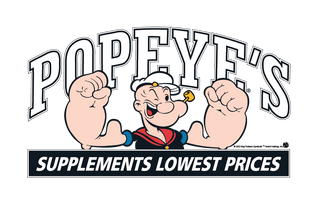
All you need to know about creatine

By : Popeye's Team
You would like to use a creatine supplement, but don’t know which one to pick? We already know that making THE decision might sometimes be pretty “confusing”. With that in mind, we’ve decided to introduce 3 popular creatine formulas in order to end this never-ending debate!
The first and most important thing to keep in mind regarding this “debate”: any creatine formula will be beneficial to you! All forms of creatine promote the same strength gains!
So, why is this creating such chaos? Most research is performed using creatine monohydrate. This means all benefits are not disputable, while still having one major drawback: its ability to dissolve in water. All of the undissolved powder remains in our intestines and attracts water, which can be an issue when we drink it. This phenomenon leads to diarrhea. HCl or buffered creatine might be the solution for those who need to run to the bathroom after having consumed creatine monohydrate.
Without further ado, here are those 3 types of creatine.
Creatine HCl
Hydrochloride creatine (HCl) is meant to boost the uptake of creatine by altering its pH and combining it with hydrochloric acid. The ability of creatine HCl to dissolve, absorb and metabolize quickly makes it extremely popular!
Creatine HCl is about 40x more soluble in liquids than creatine monohydrate. Additionally, the absorption through the intestinal wall is 60% greater. As you may have guessed it, it’ll make you stay away from the bathroom!
Finally, creatine HCl is required in smaller doses when compared to other types of creatine in order to fulfill the same energy requirements. This will prevent any side effects that could occur, like subcutaneous water retention (under the skin) or an upset stomach.
This isn’t surprising at all given the attributes now considered as the “new generation” of creatine by most!

Creatine monohydrate
On the other hand, there stands the most popular and studied creatine: monohydrate. Because of the required dosage, which can vary between 5 and 10 grams (while 5 grams are more than enough for most), this form carries the greatest potential of water retention.
Hold on there, this doesn’t make up as a drawback in itself. In fact, we must be aware that all forms of creatine cause water retention. However, said water retention won't take place in the muscle cell itself if the creatine doesn’t go through the muscle. It will rather occur in-between muscle cells, which can cause the “bloated” effect. Aesthetically speaking, creatine has the best likelihood of achieving visible results!
In order to boost its solubility, creatine monohydrate is also offered in a “micronized” form, which involves a smaller particle. This formula is an innovative concept which competes with creatine HCl by making it more soluble and easier to drink.

Buffered creatine
There’s also buffered creatine. This formula relies on an acid buffer added to creatine, protecting it from deterioration and allowing it to be stored in muscle tissue. While a dose of 3 grams is adequate, the effects are similar to those of creatine monohydrate. Just like creatine HCl, buffered creatine will make you less prone to side effects while reducing water retention.
We hope that these short summaries about the 3 types of creatine will be helpful to you. If you have any questions, we obviously invite you to visit one of our stores. A sales associate will be available to shed some light on any questions you may have regarding creatine.
Don’t have much time? No problem! You can also ask your questions by phone or through our online chat to one of our product experts!





